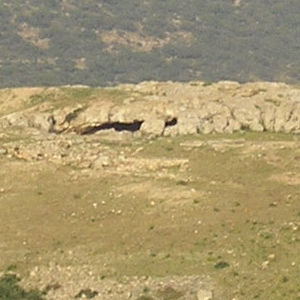Imagine the surprise of Rambam doctors when they confirmed the diagnosis of a disease in a woman who had not been overseas—a disease found previously only in the southeastern or central parts of the USA.
 The Yodfat cave where the
histoplasmosis-causing fungus
was found in 1977.
The Yodfat cave where the
histoplasmosis-causing fungus
was found in 1977.
There are somethings you don’t want to have in common with Bob Dylan and Johnny Cash—‘cave disease’ or histoplasmosis. Histoplasmosis is caused by a fungus found in the soil, usually from the droppings of birds or bats. The symptoms can vary and usually, thanks to the immune system, it passes with time. However, in other people it can harm one’s lungs and must be treated with anti-fungal medications. If left untreated, it can be fatal.
The fungus was identified in a bat cave (Yodfat cave) in Israel by a researcher in 1977. However, no human infections had been reported and it seemed that the disease was far removed from the country. The report was published but raised no eyes.
Then a woman from the Galilee region came to her doctor with a variety of complaints, including a lump in her throat. A biopsy of her pharynx was taken and sent to Rambam Health Care Campus for processing.
Dr. Ami Neuberger, Director of Rambam’s Tropical Diseases Clinic recalls, “A few months ago, we received a biopsy in the course of a diagnosis from another hospital. Such lesions are usually suspected to be malignant, but her case was different.” Neuberger continues, “I didn’t believe the results at first but specific tests in the microbiology lab confirmed the diagnosis. I immediately asked the patient, who resides in the Galilee, ‘Where did you go?’ To my surprise, the woman had never left the country!”
Histoplasmosis is not transmitted person-to-person. Neuberger explains, “The woman had suffered for several months from generalized weakness, marked weight loss, and a lump in her throat that caused hoarseness and difficulty speaking. After the Rambam doctors started treatment with an anti-fungal drug, her symptoms disappeared within a few weeks.”
However, the question remained: how had the woman contracted the disease? Rambam researchers thought about the Yodfat cave, since it is very close to the woman’s residence. However, no fungus was found in samples taken from the area. Neuberger concludes, “We have a few hypotheses, but how she actually contracted the disease remains unknown.”

